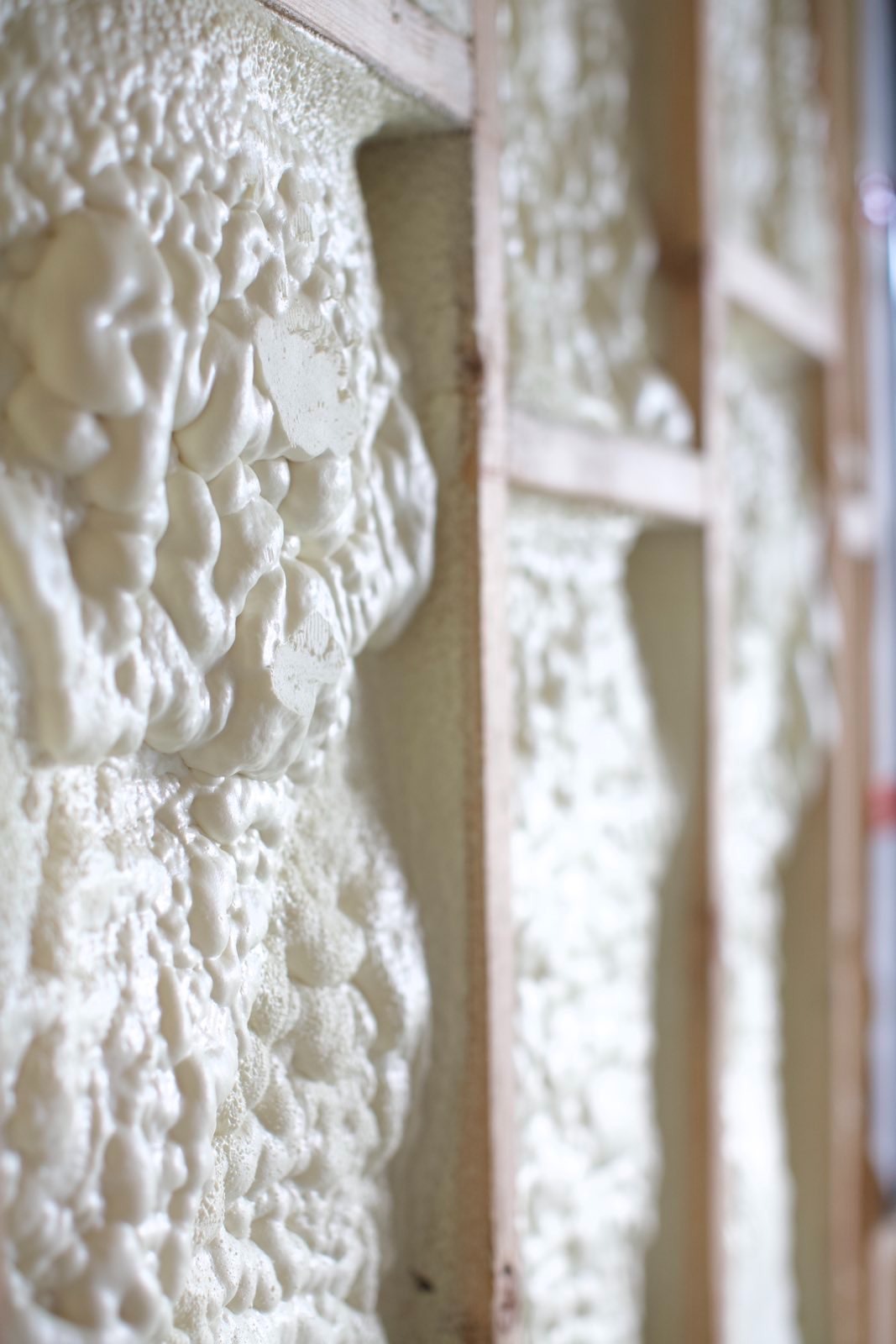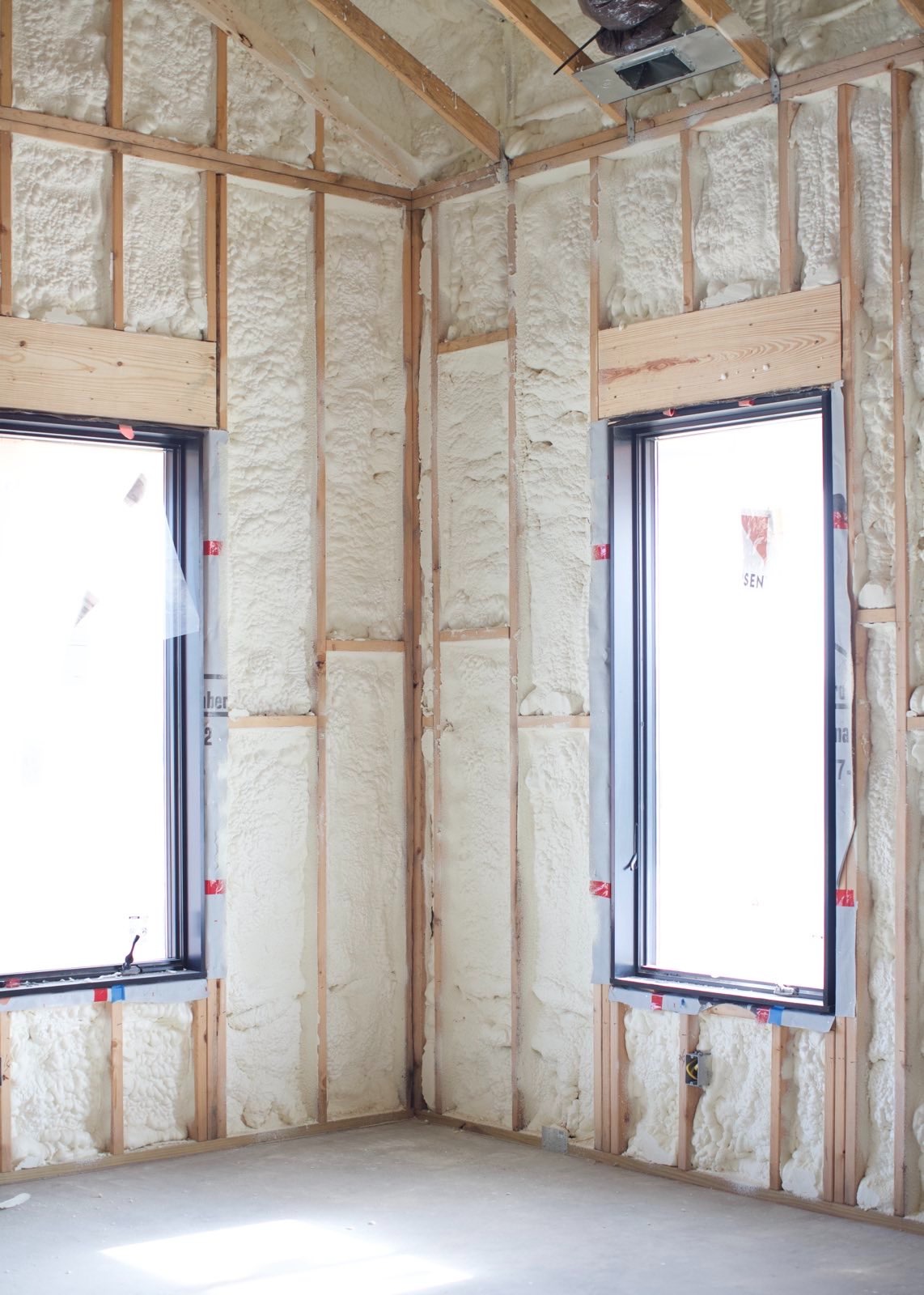Learn All About Spray Foam
What is Spray Foam?
Spray foam insulation serves as both an insulator and air barrier, effectively sealing walls, floors, and ceiling cavities to prevent air movement. This includes sealing around electrical outlets, light fixtures, windows, and doors. Whether in new construction, attics, crawl spaces, or existing structures like homes, commercial buildings, and pole barns, spray foam can be applied where cavities are accessible. Unlike traditional insulation materials, spray foam retains its shape and fills cracks, gaps, and crevices upon installation, ensuring long-lasting performance without compression, sagging, or settling over time.
What are the Benefits of Spray Foam Insulation?
Updating your insulation offers numerous benefits, but why opt for spray foam insulation specifically?
There are several compelling reasons why homeowners choose spray foam insulation, primarily due to its exceptional benefits. If you’re grappling with consistently high energy bills throughout the year due to temperature fluctuations, spray foam’s air seal can provide a solution. By sealing the building envelope, it prevents air leakage both into and out of your home, reducing the need for constant operation of your furnace and air conditioner and ultimately saving you money on monthly energy expenses.
Additionally, spray foam effectively eliminates drafts by sealing every nook and cranny where air could infiltrate. This comprehensive coverage prevents air movement, addressing one of the key issues homeowners face. Moreover, spray foam insulation can mitigate condensation on walls by creating a barrier between indoor and outdoor temperatures, preventing the formation of moisture that often occurs in poorly insulated areas.
Furthermore, spray foam insulation offers a solution to the problem of ice dams in winter. By sealing the attic with spray foam insulation, it prevents warm air from escaping through the roof deck, thus halting the process that leads to ice dam formation. This proactive approach to insulation helps maintain a comfortable indoor environment while mitigating potential issues associated with temperature differentials.
How Does Spray Foam Insulation Work?
Spray foam insulation involves applying a liquid insulation material that expands and solidifies into a foam-like substance. It’s a popular choice for both residential and commercial buildings, offering effective insulation, improved energy efficiency, and enhanced comfort. With options like open-cell and closed-cell spray foam available, let’s delve into how spray foam works:
Preparation: Before application, it’s crucial to prepare the area properly. This includes cleaning the surface to ensure it’s dry and free from dust, debris, and other contaminants.
Application: Using a specialized spray gun, the mixed liquid foam is applied onto the surface. Upon contact, the foam quickly expands and fills gaps, cracks, and crevices, forming a continuous insulation layer.
Expansion and curing: As the foam is sprayed, it expands to several times its original volume, effectively sealing irregular spaces and creating an airtight seal. Subsequently, the foam begins to harden and cure, with the curing process influenced by the type of foam and environmental conditions.
Insulation properties: Once cured, the foam forms a solid and durable insulation layer, providing resistance to heat transfer. Its cellular structure traps air, aiding in moisture control. Closed-cell foam, with its higher density, offers superior moisture blocking and insulation value compared to open-cell foam.
Types of Spray Foam Insulation
There are primarily two types of spray foam insulation, each offering distinct characteristics in how they insulate. Despite their differences, both types are highly effective forms of insulation.
Open Cell Spray Foam Insulation
Open cell spray foam insulation is characterized by small, open pockets within the foam. These pockets expand significantly during application, remaining relatively soft and flexible once dried. Typically propelled by water or carbon dioxide, open cell foam is considered more environmentally friendly compared to closed-cell options.
While open cell foam effectively blocks air movement and sound, its open structure makes it more susceptible to moisture and vapor absorption. As a result, it often requires an additional vapor barrier in certain applications. Offering an R-value of around 3.5 to 3.6 per inch, open cell foam provides solid insulation, with limitations on additional coating application due to its expansive nature.
Closed Cell Spray Foam Insulation
Closed-cell spray foam insulation shares similarities with open cell foam in creating an air barrier but features completely closed cells. These densely packed cells make the foam more rigid and can even enhance structural integrity in some cases.
With enclosed pockets, closed-cell foam offers superior resistance to moisture and vapor. Additionally, it boasts a higher insulation value, providing up to R-6.5 per inch of insulation. Its expansion rate is around one inch per application, making it easier to apply multiple coats compared to open cell foam.
However, closed-cell foams typically utilize hydrofluorocarbons as the propelling agent, which is less environmentally friendly compared to open cell alternatives.
Let the Spray Foam Guys work with you on your insulation project! Our quality of work, service, and prices are hard to beat.



